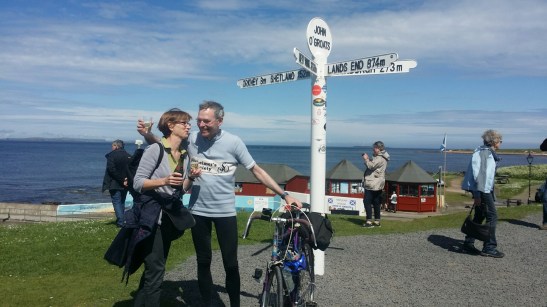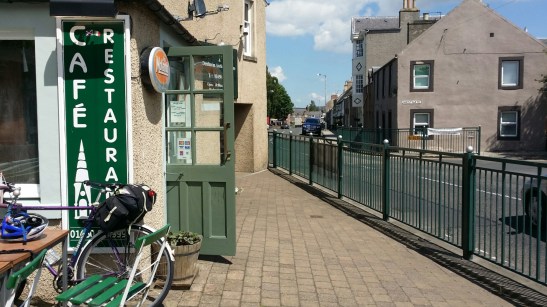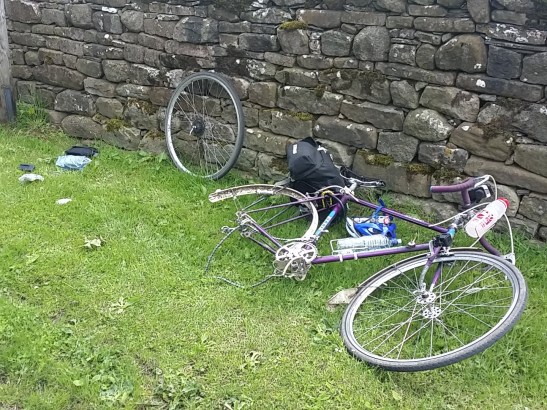Old Bloke On An Old Bike
The story of the restoration of a 1950s classic bicycle for a Land's End – John O'Groats charity ride in aid of Alzheimer's Society
30 Jun 2016: The anticlimax begins…
I think I’ll keep this blog going with occasional posts – after all, I have another old bike to rebuild (a 1942 Claud Butler). But in the meantime, do I have any advice for other old blokes contemplating LEJOG on an old bike?
I’m not sure advice for “old blokes” is any different to advice for anyone else, and there’s plenty of that on the web. I’d just say: if you want to do LEJOG , then do it! It’s a wonderful experience (rain, punctures and all) that you’ll remember for the rest of your life. But don’t take unreasonable risks – if you have any sort of health condition, take medical advice first, and be thorough with training and preparations. Riding long distances day after day after day is quite wearing. Try to stay mobile, varying riding position to avoid repetitive stresses. As with certain other enjoyable human activities, endurance and persistence, not speed, is what counts. And eat well – you don’t need all that technical nutritional stuff that bike shops try to sell you, but you will need to eat nearly twice as much as you normally do. It’s much better to start late after a good breakfast than set off at the crack of dawn feeling hungry – the days are very long in June, so there’s no rush.
As for the “old bike” aspect, well you have to realise that old stuff tends to break. I was lucky – I had nothing worse than a broken mudguard tab and toestrap rivet. But I did deliberately treat the bike quite gently – no crazy accelerations or crashing gear changes on steep hills. I once saw someone experience a horrifying handlebar break and I wouldn’t want to go through that. Old aluminium alloy is prone to fatigue failure, particularly if there are surface scratches to focus the stresses, so it’s important to ride relaxed and avoid generating sudden big stresses on the bike. I would also think hard before using very old alloy wheel rims – catastrophic failure of a wheel on a 35mph descent would be very bad news. I compromised by using modern rims laced to 1950s hubs, which worked fine and didn’t sacrifice authenticity too much.
 On the ride itself, I’d avoid using just one means of navigation – I found that a Garmin GPS device + relevant pages torn from the Phillips road atlas worked well, but neither would have been satisfactory alone.
On the ride itself, I’d avoid using just one means of navigation – I found that a Garmin GPS device + relevant pages torn from the Phillips road atlas worked well, but neither would have been satisfactory alone.
With the benefit of hindsight, I’d stick to proper roads – with cycle tracks you risk shredded tyres from sharp gravel and broken glass. That pretty much rules out many parts of NCN routes.
I had to do most of the ride alone, but I’d advise against that if at all possible. I felt pretty lonely and vulnerable trying to deal with punctures with depleted stock of spares in the pouring rain miles from my destination – a group of people can share tools/spares and give each other support. You can’t call the AA…
On the other hand, I found people to be really kind and generous with their help, so if you do get into trouble you may end up with a much more positive view of human nature than you started with. Enjoy the ride!




